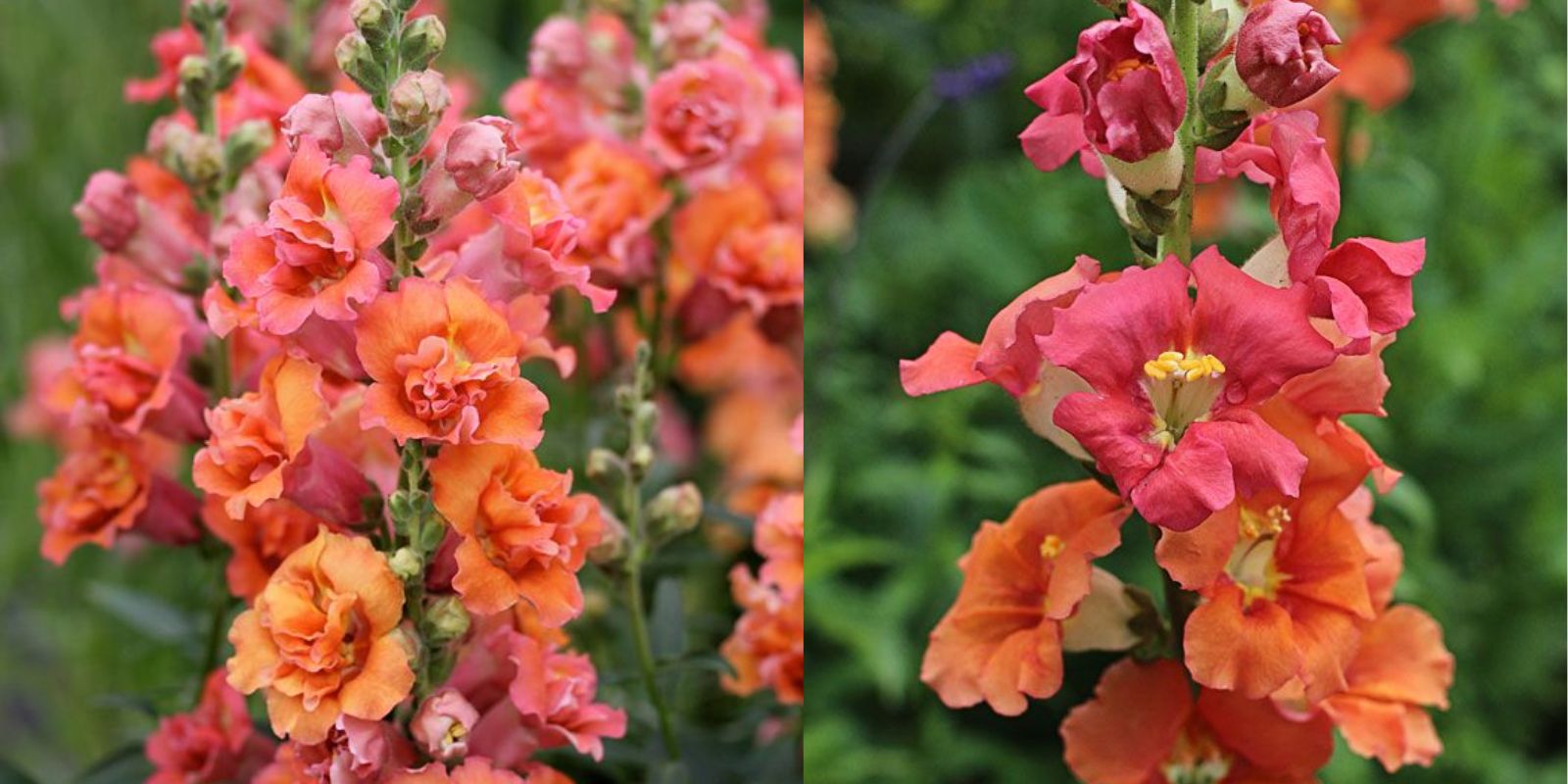Introduction
Antirrhinum majus, commonly known as Snapdragons, are a beloved choice for gardeners due to their vibrant colors, unique flower shape, and ability to add a dramatic flair to any garden. Originating from the Mediterranean region, these perennial favorites are available in an array of hues, from soft pastels to bold, striking shades. Whether you’re a novice gardener or a seasoned pro, growing Snapdragons can be both a rewarding and enjoyable experience. This comprehensive guide will walk you through everything you need to know to successfully cultivate these charming blooms in your own garden.
1. Understanding Snapdragons
Snapdragons, or Antirrhinum majus, are known for their distinctive flowers that resemble the face of a dragon. The flowers have a unique mechanism: when squeezed, the blooms open and close like a dragon’s mouth. This fun feature makes Snapdragons particularly engaging for children and garden enthusiasts alike. These plants are typically grown as annuals, though in milder climates they can behave as biennials or even perennials.
2. Choosing the Right Location
Selecting the appropriate location for your Snapdragons is crucial for their success:
- Sunlight: Snapdragons thrive in full sun but can also tolerate partial shade. Aim for a location where they receive at least 6 hours of sunlight daily.
- Soil: Opt for well-drained soil enriched with organic matter. Snapdragons prefer soil with a pH between 6.0 and 7.0. If your soil is heavy clay or sandy, amend it with compost to improve drainage and fertility.
3. Preparing the Soil
Proper soil preparation ensures healthy Snapdragons:
- Soil Testing: Conduct a soil test to determine pH and nutrient levels. Amend the soil based on test results, adding lime to raise pH or sulfur to lower it if needed.
- Tilling: Loosen the soil to a depth of about 12 inches. This helps improve aeration and allows roots to penetrate more easily.
- Amendments: Mix in well-rotted compost or aged manure to enrich the soil with nutrients and improve moisture retention.
4. Sowing Seeds
Snapdragons can be started from seeds either indoors or directly in the garden:
- Indoor Sowing: Start seeds indoors 6-8 weeks before the last expected frost. Use seed trays or small pots filled with seed-starting mix. Sprinkle seeds on the surface, press lightly, but do not cover them, as they need light to germinate. Keep the soil moist and maintain a temperature of 65-75°F (18-24°C) for optimal germination.
- Direct Sowing: For those planting directly in the garden, sow seeds after the risk of frost has passed. Scatter seeds on the soil surface and press them in lightly. Keep the soil consistently moist until germination.
5. Transplanting Seedlings
When seedlings are ready to move outdoors:
- Hardening Off: Gradually acclimate seedlings to outdoor conditions by placing them outside in a sheltered spot for a few hours each day, increasing exposure time over a week.
- Transplanting: Choose a cloudy day or early morning for transplanting to reduce transplant shock. Space seedlings 6-12 inches apart, depending on the variety, to allow for mature growth. Plant them at the same depth they were growing in their pots.
6. Care and Maintenance
Proper care will help your Snapdragons flourish:
- Watering: Water regularly to keep the soil consistently moist but not waterlogged. Avoid overhead watering to reduce the risk of fungal diseases.
- Fertilizing: Feed Snapdragons with a balanced, all-purpose fertilizer every 4-6 weeks during the growing season. Over-fertilizing can lead to excessive foliage growth at the expense of flowers.
- Pinching: Pinch the tips of young plants to encourage bushier growth and more blooms. Remove spent flowers (deadheading) regularly to extend the flowering period and promote continuous blooming.
7. Pest and Disease Management
Keeping pests and diseases in check is essential for healthy Snapdragons:
- Pests: Common pests include aphids, spider mites, and snails. Use insecticidal soap or neem oil to manage aphids and mites. Hand-pick snails and slugs or use organic slug baits.
- Diseases: Watch for signs of fungal diseases like powdery mildew or rust. Ensure good air circulation around plants and avoid wetting the foliage. If fungal issues arise, apply an appropriate fungicide as a preventive measure.
8. Overwintering and Harvesting
In colder climates, Snapdragons are usually treated as annuals, but there are ways to extend their life:
- Overwintering: In mild climates, you can overwinter Snapdragons by mulching around the base to protect the roots. In colder areas, consider treating them as annuals and replanting each year.
- Harvesting: Snapdragons are best enjoyed fresh in the garden, but you can also cut flowers for indoor arrangements. Harvest blooms early in the morning when they are fully open for the best vase life.
9. Troubleshooting Common Issues
Address common challenges that gardeners may face:
- Leggy Growth: If plants become leggy, they may not be receiving enough light. Ensure they get adequate sunlight or consider relocating them to a sunnier spot.
- Poor Bloom Production: This could be due to insufficient fertilization or overcrowding. Make sure plants are spaced properly and fed appropriately.
Conclusion
Growing Antirrhinum majus, or Snapdragons, can bring a splash of color and a touch of whimsy to your garden. With their unique flower shapes and vibrant hues, they are sure to attract attention and admiration. By following these steps for planting, caring, and maintaining Snapdragons, you’ll enjoy a garden full of beautiful, dragon-like blooms throughout the growing season. Happy gardening!
Motivational Sentence:
Dive into the magic of Snapdragons and transform your garden with their vibrant, dragon-inspired blooms. Start planting Antirrhinum majus today for a garden that dazzles and delights! 🌸🐉 #Snapdragons #GardenMagic #FlowerPower #BloomingBeauty #GardeningJoy #FloralDelight #PlantLove

